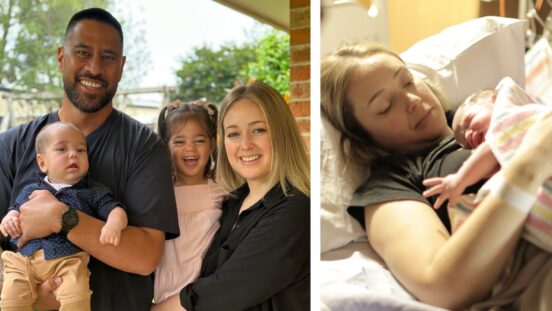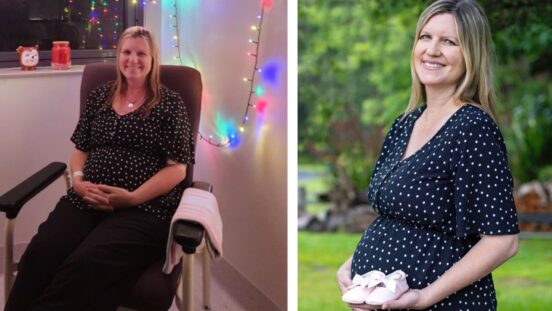REAL LIFE: “I googled my daughter’s symptoms and she was diagnosed with Type 1 Diabetes”
During lockdown last year, Emma realised her daughter was unwell.
By Emma Putson
In the heart of lockdown last year, I began to notice things were wrong when my daughter Penny, who was five at the time, started losing weight rapidly, drinking too much water, and getting up to go to the bathroom over six times in the night.
It wasn’t until I googled her symptoms that it dawned on me that she may have diabetes.
It took several visits to the GP before Penny was diagnosed with Type 1 diabetes last year. We had a fantastic medical team supporting us, but nothing prepares you for the diagnosis and then going home and having to live with Type 1 every single day.
I felt very alone at times but learnt to stay calm and focused even what I felt terrified I was doing the wrong thing.
Your natural instinct as a mother is to protect them, but you also have to let your child be independent and confident in managing their Type 1 as they grow up. It’s a hidden condition; we have constantly think about blood glucose levels, day and night, and make the necessary adjustments to keep her safe.

Penny was five years old when she was diagnosed with Type 1 diabetes.
I had to teach Penny to be stronger and independent much earlier than other children. Penny recently had an insulin pump fitted, which provides her with regular insulin throughout the day rather than needing four to five daily injections.
She now has much more freedom, and we no longer have battles about needing to inject insulin at mealtimes.

Emma calls her daughter’s Type 1 diabetes a “hidden condition”.
The Type 1 Diabetes Foundation has been a huge help in getting us through everything. They provide ‘welcome’ care packages for children and run dinners around Victoria where families affected diabetes can get together to reflect, gain support, and enjoy spending time with the community.
This really helped me understand how to best manage Penny’s condition and connect with others who were in a similar position to me.
Before school every day now, we have the same mad rush as any other parent – only ours also includes blood glucose testing and insulin. It’s tough at times but I actually feel privileged to support my daughter with Type 1.
In many ways, having to deal with it together and as a family has given us a special bond that I couldn’t have imagined.

The Type 1 Diabetes Foundation provided Emma with support and connected her with families in a similar situation.
What is Type 1 Diabetes?
According to Diabetes Australia, Type 1 diabetes is an autoimmune condition in which the immune system is activated to destroy the cells in the pancreas which produce insulin. We do not know what causes this autoimmune reaction. Type 1 diabetes is not linked to modifiable lifestyle factors. There is no cure and it cannot be prevented.
Type 1 diabetes:
- Occurs when the pancreas does not produce insulin
- Represents around 10 per cent of all cases of diabetes and is one of the most common chronic childhood conditions
- Onset is usually abrupt and the symptoms obvious
- Symptoms can include excessive thirst and urination, unexplained weight loss, weakness and fatigue and blurred vision
- Is managed with insulin injections several times a day or the use of an insulin pump.




